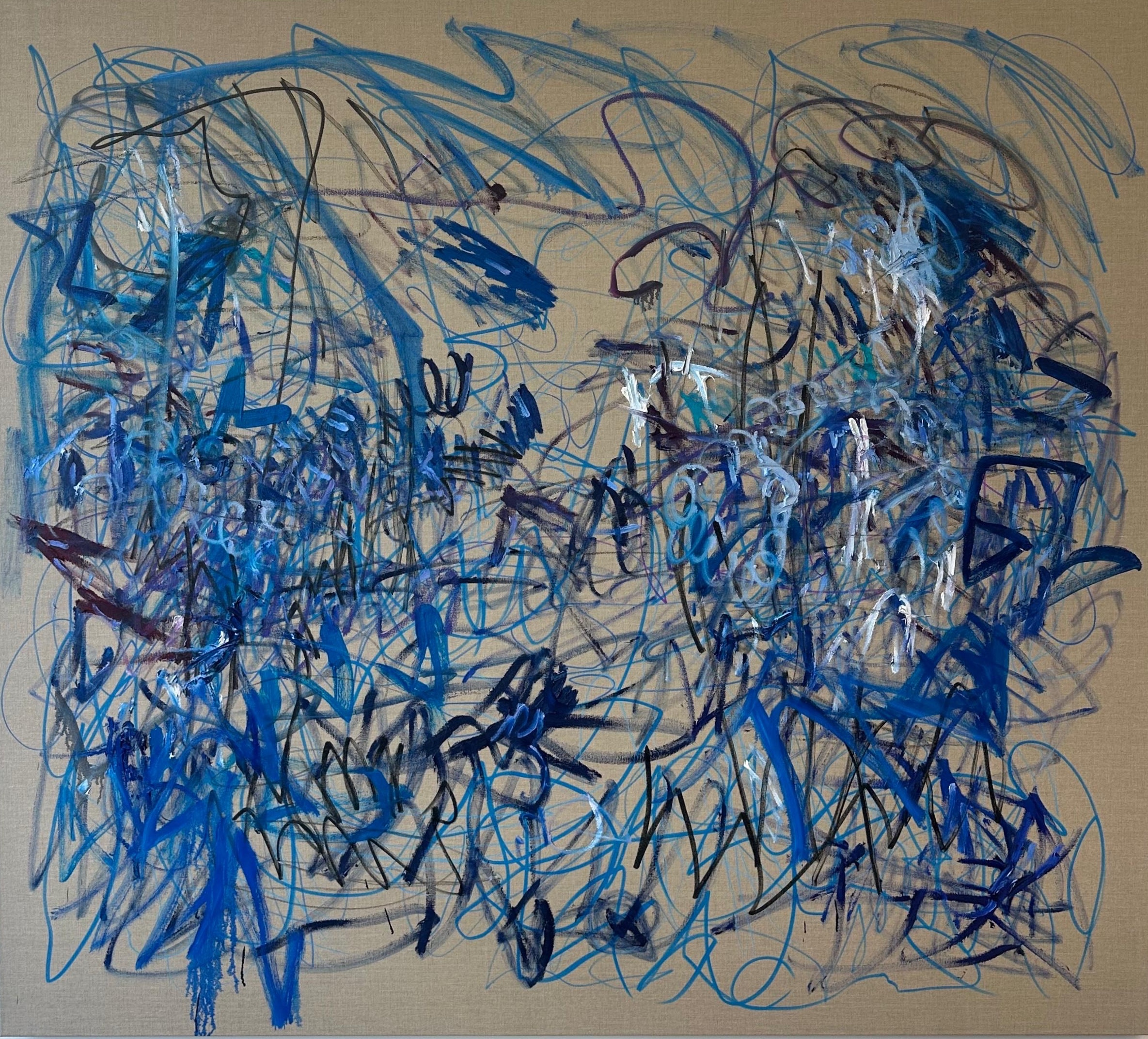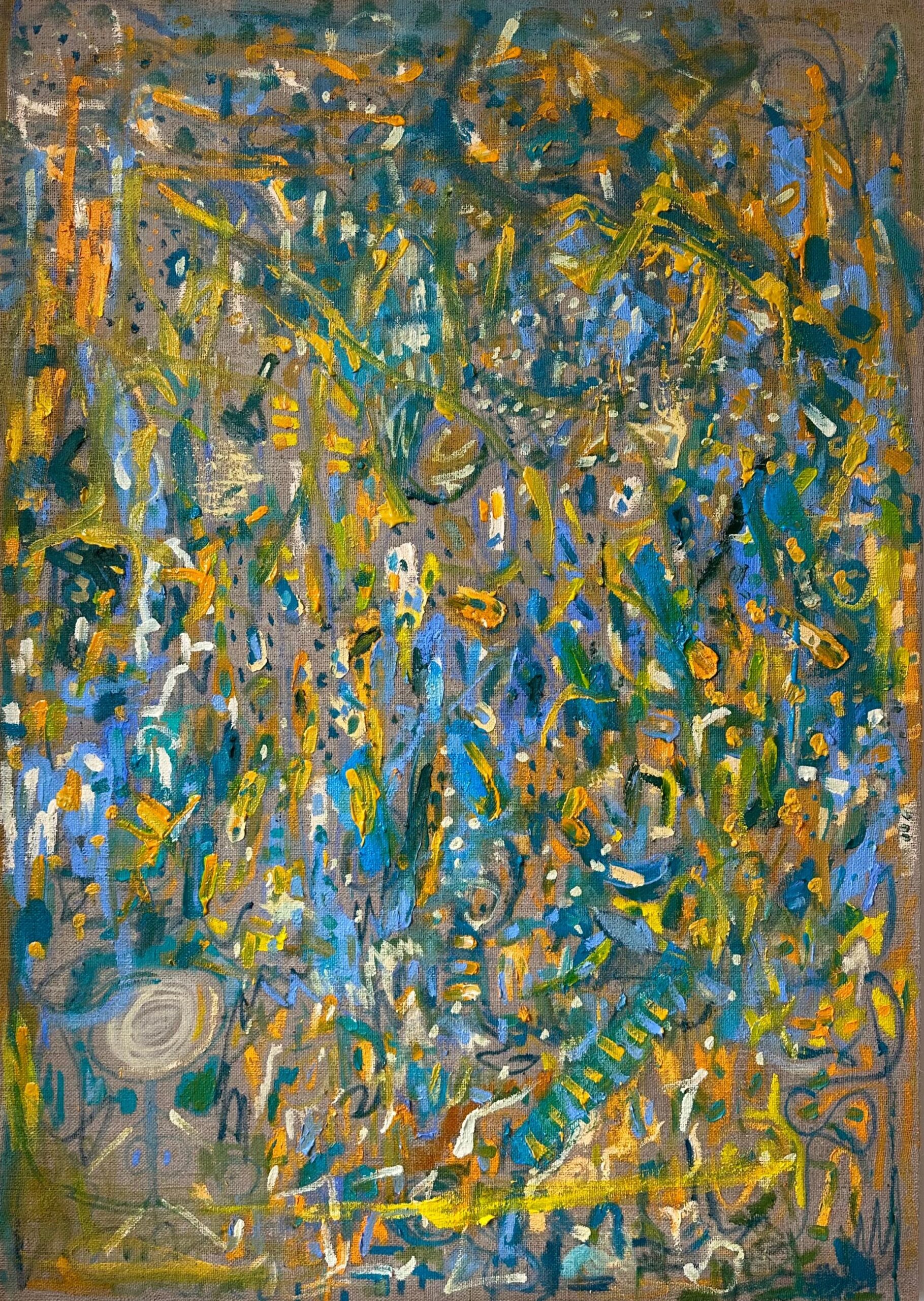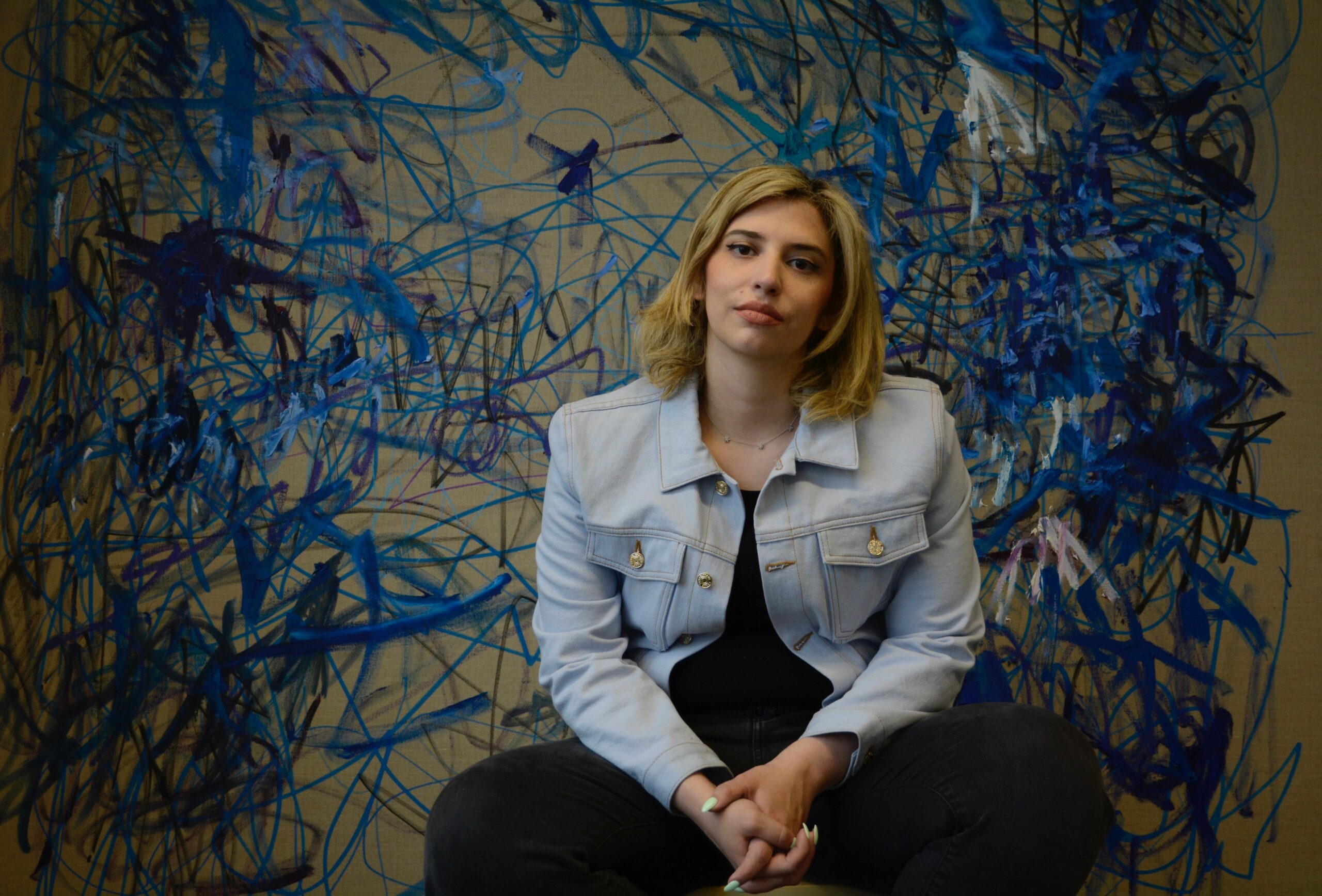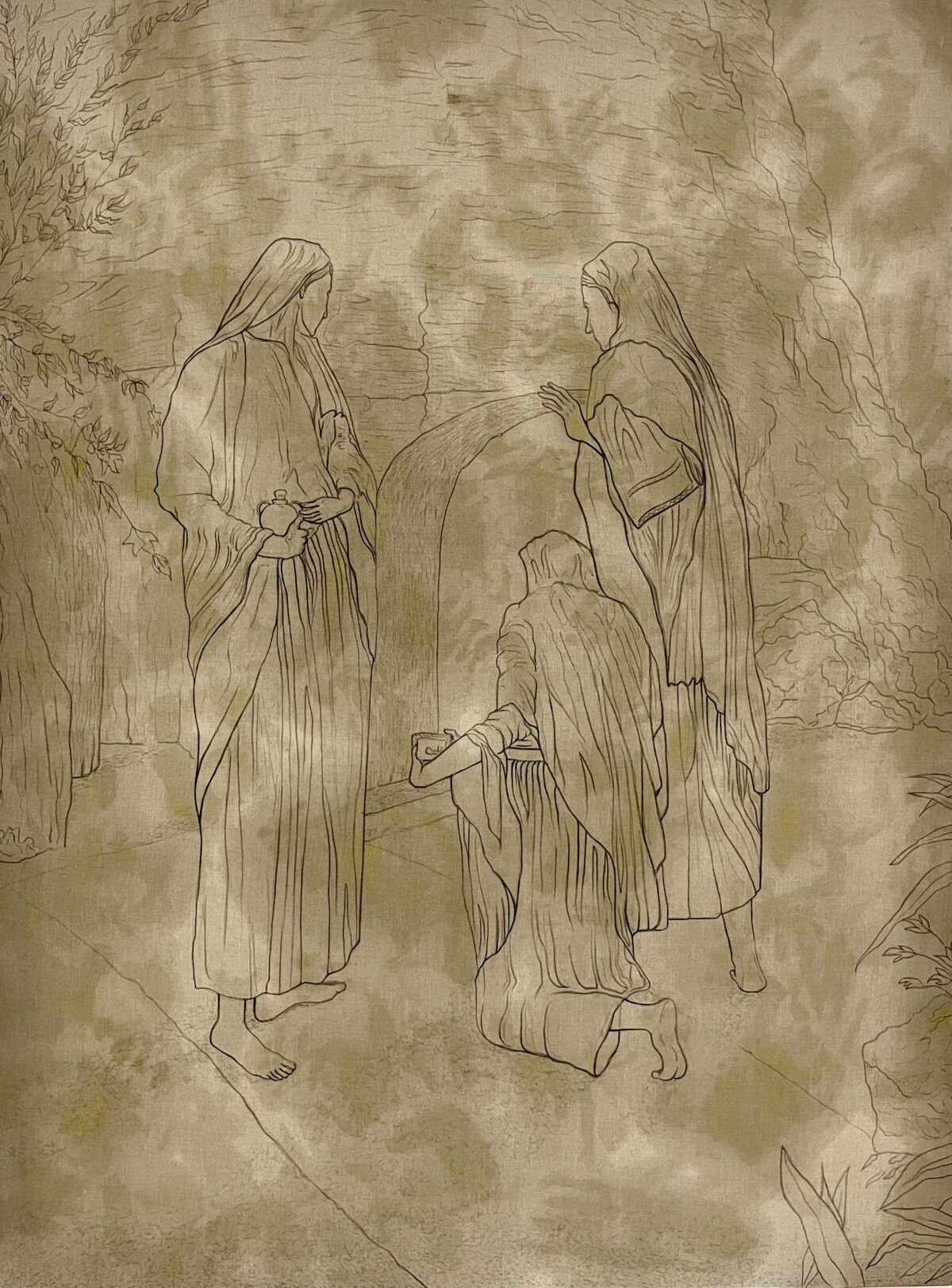Category Art
Published July 20, 2025

Soulmates Collide (Oil, oil pen, gr ... on linen, 290 x 180 cm), by Mariana Cordoba
I am in Mariana Cordoba’s studio in Battersea. Sunlight pours in through generous windows, and large linen canvases lean against the walls, bearing electrifying scrawls in hues of green and blue. A slew of scrolled paintings perch by the doorway, their corners unfurling to reveal tantalising spurts of vivid colour. The floor is a testament to an artist in the throes of work: palettes strewn with oil paints; open cases of Crayola markers and chunks of graphite; a beanbag ensconced in the centre of the room, easily swivelled to face the canvases on either wall. The paintings are wild and frenzied, almost spiritual in their fervour.
Mariana is a Colombian-American artist living in London. Since 2018, her work has been exhibited in solo and group exhibitions in Miami, Punta Del Este, Montevideo, Buenos Aires, Vero Beach, Madrid, and Santander. Her paintings are hypnotic and gestural, deeply inspired by the hybrid art form of asemic writing.
Rooted in the Greek word asemos (ἄσημος)—without sign or semantic content—asemic writing denotes script-like gestures that resemble writing but carry no fixed linguistic meaning. It’s a fitting medium for an abstract artist. In Mariana’s work, she uses this form to meld text and image together, leaving the results open to subjective meaning. ‘I think of it as writing without language,’ she tells me.
Her art hovers between these blurred boundaries of creative communication, somewhere between painting and drawing, writing and doodling. It’s a blend of text and texture. ‘I often treat the canvas like a sheet of paper,’ she notes, ‘sometimes rotating it while working and allowing the forms to develop from different orientations.’

The Infection (Oil on Hessian, 170 x 120 cm), by Mariana Cordoba
Mariana recalls how her earlier works were heavily coded and deliberate, often incorporating Colombian symbols, Egyptian hieroglyphics, and her own invented codes of expression. There’s a density to her early paintings that, while still mesmerising, feel—in the artist’s own words—more chaotic. ‘I think I was in a different place emotionally. Now, I’m more interested in creating space in my paintings, and I think it reflects how I’m feeling.’ Her later paintings have evolved into a looser, freer approach, relinquishing dense symbolic systems in favour of airy abstraction.
Trading a colourful palette for more selective—if still expansive—selections of one colour, and committing to her preferred linen material after some experiments on Hessian coffee bags, Mariana’s later works have the assuredness of an artist settling into her groove. There is a sense in her newer pieces of a grip loosening around the brush, a certain surrender to the process that feels at once relaxed and purposeful.
Mariana is a prolific artist, admitting that during her BFA in Miami, she painted much more than what was assigned. In 2024, she graduated from the Royal College of Art with an MA in Painting, and is currently represented by Steven G. in Miami. ‘Making art has been very therapeutic for me,’ she muses. ‘It’s a way for me to let go of things. If I’m anxious or holding onto something emotionally, painting helps me release it.’ It’s almost a form of journalling without words, a non-verbal outlet for expressing her internal landscape. ‘I don’t always know what the painting is about when I start,’ she says, smiling. ‘But by the time I finish it, I’ve worked through something.’

Mariana Cordoba
To “read” Mariana’s work is to engage with the artist’s somatic process of layering, through translucent washes or opaque blocks that obscure or reveal earlier gestures, opening them up for contradiction. The paintings hold the moods she was in while making them, each one a slow accretion of time and emotion. The layering is not only technical but emotional: folding moments into each other; integrating what was once a mistake into what makes the next thing possible.
‘I like to think of my paintings as being in conversation with each other,’ the artist says, referring to her works as siblings or cousins in a visual family. Their dialogue is a wordless one, spoken in layers and moods, told in writing that’s instinctive, bodily, not pinned down by language.
Follow Maria’s work on her Instagram: @marianacordoba__


